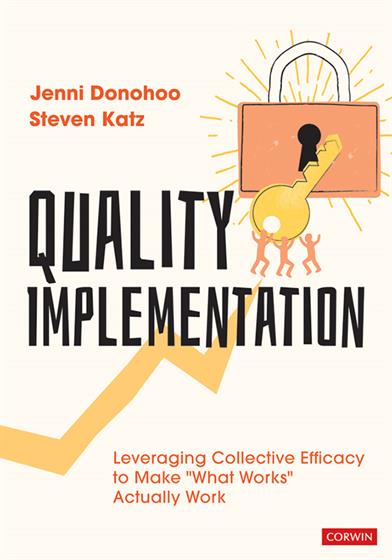List of Figures, Tables, and Resources
Preface
About the Authors
PART I: BELIEFS AS THE FOUNDATION TO QUALITY IMPLEMENTATION
Chapter 1 The Elusive Quest for Quality Implementation
We Already Know What’s “Supposed” to Work in Schools
Quality Implementation Defined
The Problem of Getting to Quality Implementation
Beliefs Matter
Educators’ Beliefs
In Conclusion
Chapter 2 Why Implementation Frequently Fails
Collective Efficacy
Diminished Efficacy Is a Barrier to Quality Implementation
Collective Efficacy’s Role in Team Motivation
Diminished Collective Efficacy Results in a Reduction of Goals and Effort
Collective Efficacy Beliefs Shape Experience
In Conclusion
Chapter 3 Collective Efficacy as an Enabler of Quality Implementation
Integrating Daily Physical Activity in Elementary Schools
How Collective Efficacy Drives Quality Implementation
How Teams Exercise Control
Motivational Investments
How Goal Setting Influences Motivation
How Causal Attributions Influence Motivation
The Pygmalion Effect
In Conclusion
PART II: FOSTERING BELIEFS TO REALIZE QUALITY IMPLEMENTATION
Chapter 4 Creating Mastery Moments
Mastery Experiences
Key Features of Mastery Environments
There Is an Open-to-Learning Stance
There Is an Orientation Toward Mastery Goals
Teams Engage in Joint Work Characterized by Positive Interdependence
The Thunder Cape Rescue
Progress Is Monitored Based on Success Criteria
Implications for Practice
A Focus on Learning Together
A Focus on Cause-and-Effect Relationships
A Focus on Goal-Directed Behavior
A Focus on Purposeful Practice
In Conclusion
Chapter 5 Learning Vicariously
Key Features of Vicarious Experiences
Similarity
Reinforcement
Attention, Retention, Reproduction, and Motivation
Psychological Safety
Implications for Practice
Establishing a Culture That Enables Observational Learning
Structures and Protocols for Observational Learning
Guiding Observational Learning
In Conclusion
Chapter 6 Convincing Teams That They Have What It Takes
Social Persuasion and Affective States: Two Additional Sources of Collective Efficacy
Using Social Persuasion to Influence Collective Efficacy
Cognitive Dissonance
Social Judgment Theory
The Narrative Paradigm
In Conclusion
References
Index



